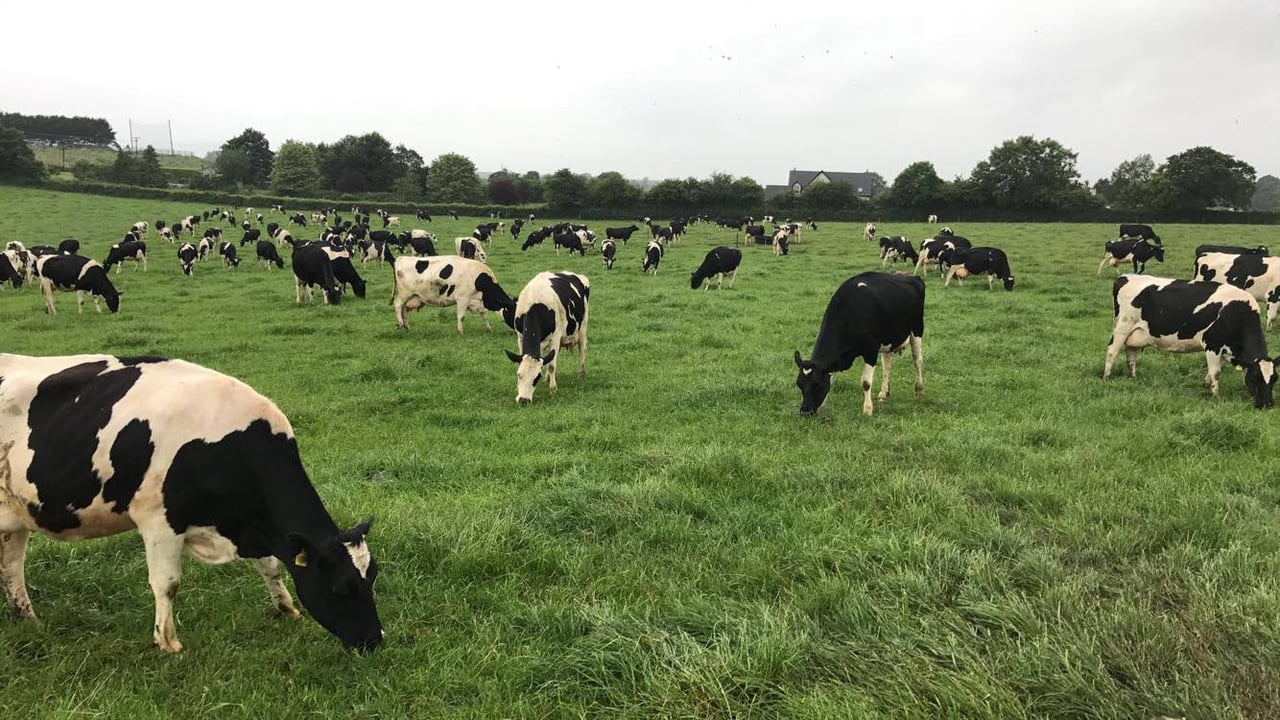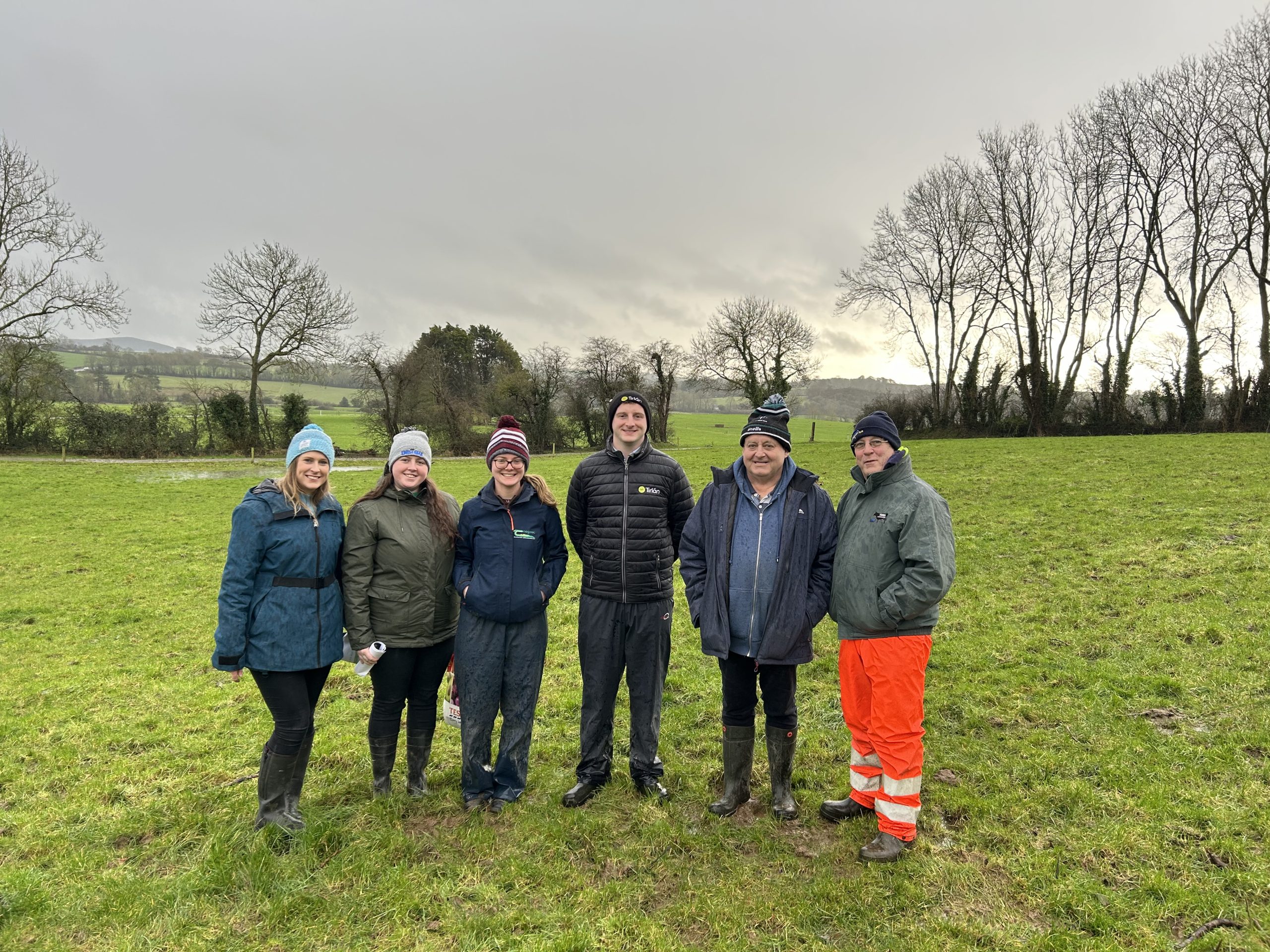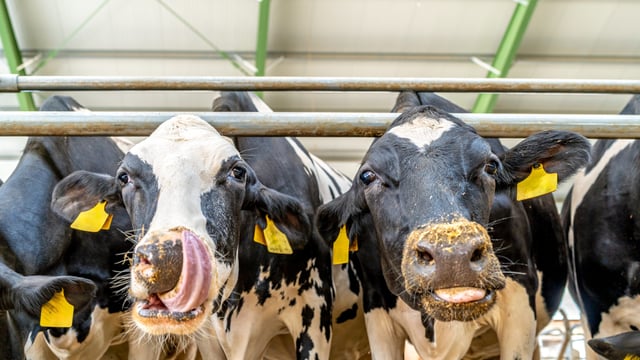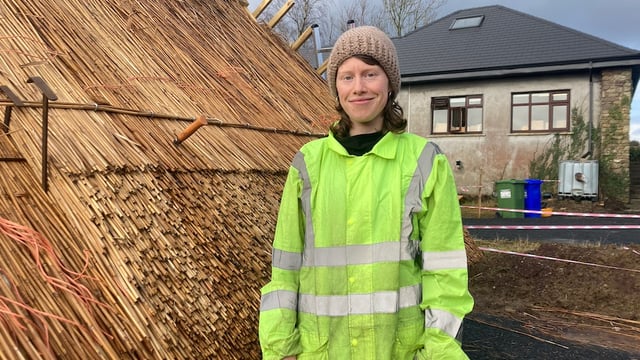On/off grazing, early nitrogen proving worth for Kildare farmer
A spring grass walk was held on the farm of Eugene and Eoin Lawler on Friday, February 21, where on/off grazing and early nitrogen (N) were the main talking points.
The Lawlers started their calving season a few days before the planned start date of January 20, with a number of synchronised heifers calving down earlier than anticipated.
As of February 21, 114 cows have calved down on the farm out of the 150 that are due to calve, which means that the Lawlers are well on their way of achieving their six-week calving target of over 90%.
Farming on a 48ha milking platform, the milking platform is stocked at 3.11 cows/ha, with the whole platform stocked at 2.5cows/ha.
Tirlán farm sustainability advisor, Donnacha Ryan, talked at the walk and expressed the importance of farmers making use of the Farming for Water European Innovation Partnership (EIP) Project measures.
It was understood that the €60 million EIP funding needs to be used up to improve water quality in an effort to retain the derogation, and the likes of a bucket and brush for the loader can be funded for up to €2,000, which is a handy tool to have for keeping the yard clean.
Ryan mentioned that "most of the measures, farmers are already doing, so you may as well get paid for them".
Teagasc's Margaret Farrell addressed the issues farmers experienced with protected urea and highlighted that there were a few products last year that were of poor quality, but there seems to be no issues from the fertilisers that are being tested this year.
From her experience, when farmers are suffering with striping it is from protected urea products with potassium (K) in them, with a few cases where sulphur was the issue.
Farrell also addressed the importance of making sure your fertiliser calibration is right and that spreading rates, veins, and discs were adjusted to suit each fertiliser.
The grazing side of things was covered by Teagasc dairy advisor, Ned Loughlin, where he highlighted that the Lawlers had a closing farm cover of 706kg of dry matter (DM)/ha and an opening farm cover of 623kg DM/ha.
Eugene Lawler first got the cows out on January 21 and plans to finish the first round on April 1, whereby the diet for now consists of 4kg DM grass, 2kg of concentrates and 8kg of silage.
Eugene said that "even if it is just getting the cows out for two and a half to three hours, it's definitely worthwhile."
The farmer said he aims to get through five paddocks in February with five grazings in each, which means that's about 25 grazing events in a month, which he believes is not too hard to get to even though cows had been in for two days last week due to rain.
The aim is to have 33% of the farm grazed by the end of February and graze the following 66% in the month of March.
As of February 21, Eugene spread 33% of the farm with protected urea of 23 units/ac (30kg/ha) and slurry was spread in late January at a rate of 2,500gal/ac on 35% of the farm.
Ned Loughlin highlighted the benefits of splitting your N spreading between February and March for a better response in growth rates.
Loughlin went through Lawler's spring fertiliser and slurry plan which is as follows:
| Date | Low covers (0-700kg DM/ha) | Medium covers (700-1,000kg DM/ha) | High covers (>1,000kg DM/ha) |
|---|---|---|---|
| Jan 27- March 1 (30% grazed) | 2,000gal/ac dilute slurry (15% of farm) | 20 units N/ac + graze | 20 units N/ac |
| March 1 - March 15 (30% farm grazed) | Graze + 40 units | Slurry or 1.5 bags/ac of 18:6:12 or 25 units N/ac | Slurry or 1.5 bags/ac of 18:6:12 or 25 units N/ac |
| March 15 - April 10 | 20 units N/ac | 20 units N/ac |
It was highlighted by Ned Loughlin and Teagasc's Bernadette Bennett that 0.5 bags of N/ac in early spring is the equivalent to one bale of silage.
A bale of high-quality silage is worth €50 and is 250kg DM and protected urea costs approx. €500/t which means 0.5 bags/ac costs €12.50.
If the response to 1kg of N is a minimum of 10kg DM/ha grass, then spreading 25kg N/ha is worth 250kg DM/ha of grass grown.
This means that for an investment of €12.50 for spreading 0.5 bags/acre of N, you will get a minimum return of €50 worth of feed which is four times the return in investment.
Bennett encouraged farmers on the day to get out early N before February is done, as spreading 33% of 60kg N/ha in February and the other 66% in March gives a better response than spreading 100% of the 60kg in March.
The result of all of the N being applied in the month of March gives a grass growth response of 14.6kg DM/ha, which is significantly lower compared to spreading 33% of that in February and the rest in March which gives a response of 18.6kg DM/ha.
An extra 4kg DM can be expected for every kg of N applied when using the 33:66 split and 4kg DM x 60kg N/ha applied = 240kg DM/ha extra grass grown.
Assuming that the farm is stocked at three cows/ha, there is an additional 80kg DM/cow available and when you are getting cows out when you can like Eugene, if the allocation is 6kg DM/grazing/cow, there is an extra 13 grazings per cow available.
Loughlin added that getting cows out by day in comparison to eating 68% DMD silage with 6kg meal is worth an extra €2.78/cow/day which in a 100 cow herd is worth €1,950/week.
Loughlin said that "for a 100 cow herd, the difference in getting them out by day at Valentine's Day instead of St. Patrick's Day, could be worth an extra €10,000 to the farmer."






